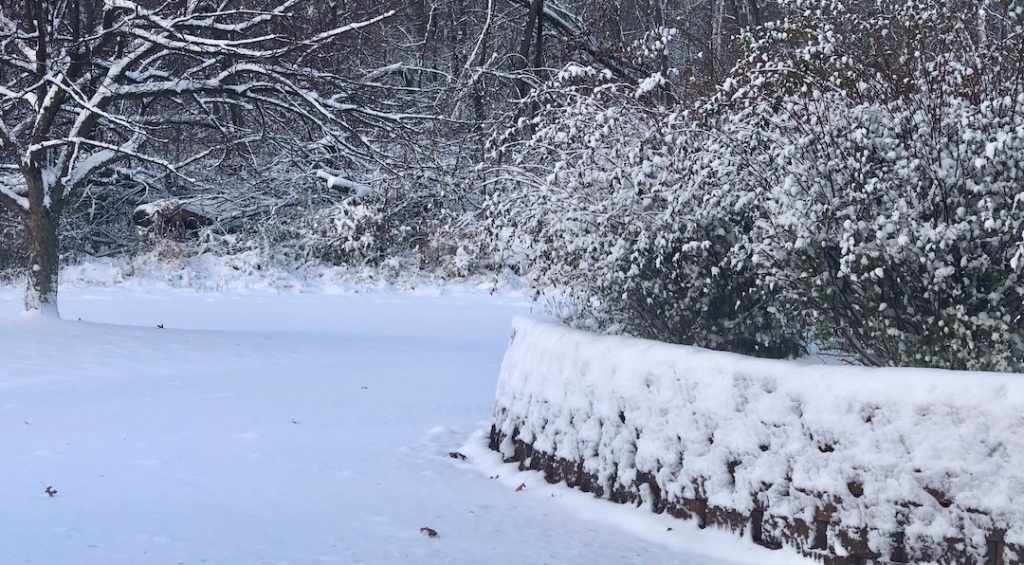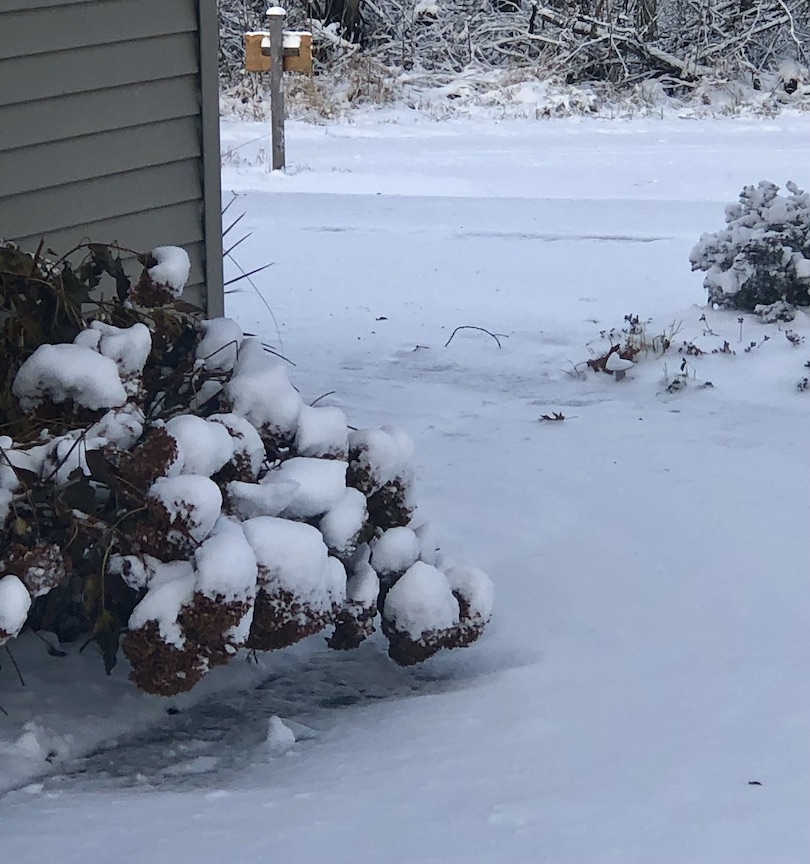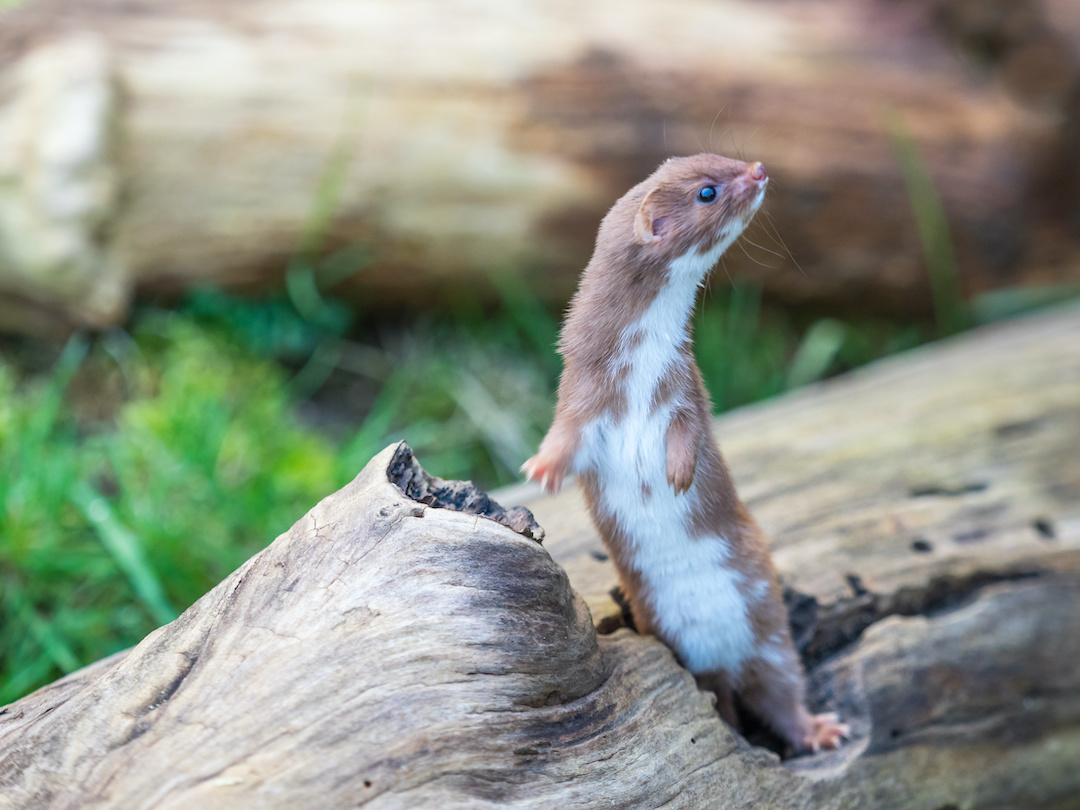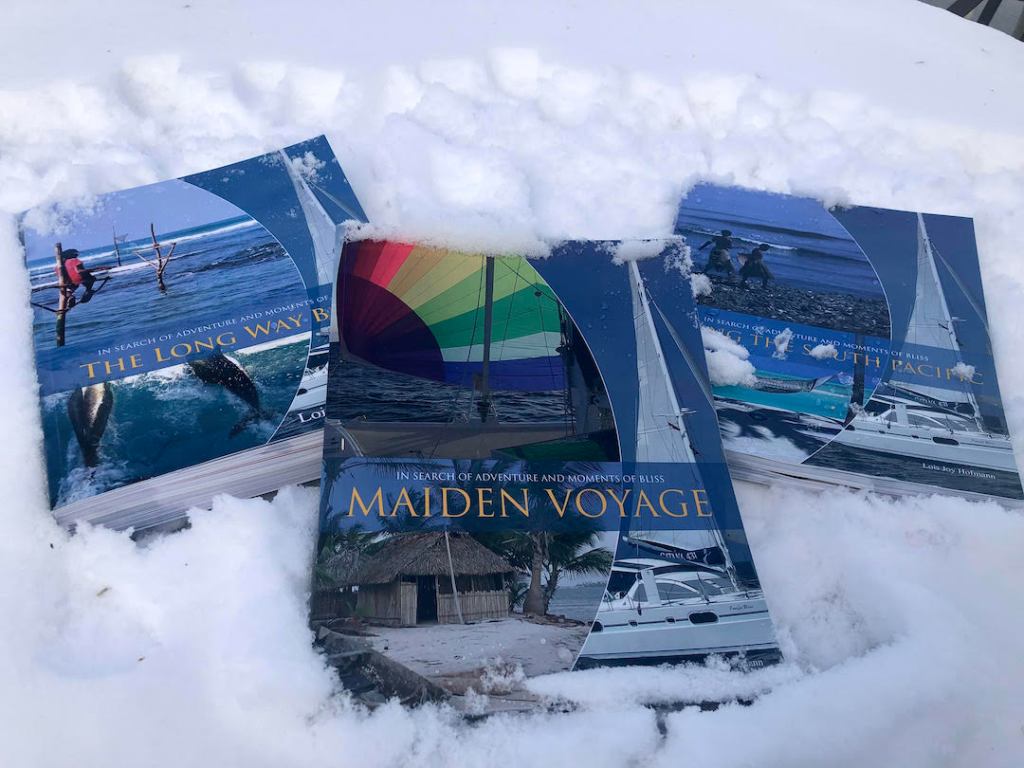This is a story intended for the WINTER section of a book I’m writing: Seasons of Joy at Northern Bliss. It took place in November, 2021.
Beneath the Snow: Sheltering in the Subnivean Zone.
The First Snow. The 2021 annual fundraiser for the Polk County Historical Society was held at the edge of winter, on November 23, at The Browtine Event Center. The theme was WWII: A Salute to the Greatest Generation. As Gunter and I entered the building, we saluted two uniformed servicemen—veterans in military gear. Huge snowflakes fell gently on their hats, gradually turning them white. While strolling past display booths filled with artifacts from the Polk County Museum, the potential consequences of that snow hit me. I turned toward Gunter. “Let’s check on the progress of this snowstorm during the intermission. After the dinner program.”
He nodded. “Should we be concerned?”
“Just a precaution. In case it’s starts snowing heavily.”
We took our assigned seats and enjoyed the program—the best fundraiser we’d attended. The committee is to be commended.
Before the Big Band took the stage, we donned our light coats and stepped outside to a rapidly changing world. Our Chevy Equinox was already covered with snow. Gunter searched for his driving gloves but found none. Mine were fortunately in my coat pocket. While he brushed aside the snow on the driver’s side with his arm and started the car, I scraped the windows with my dress gloves. We berated ourselves for failing to keep a scraper in the car, let alone a winter stash of warm clothes, boots, and mittens! Our flight back to San Diego was scheduled for November 30; preparing for snow hadn’t entered our minds. Obviously, there was no discussion of returning to the event. We were heading home ASAP!
We turned left out of the venue onto a two-lane road barely distinguishable from the surrounding countryside. No one had driven through yet; there were no tire tracks to follow.
“Can you see where the shoulders are?” Gunter asked.
I squinted. “Just stay to the middle. I’ll keep praying that we don’t meet anyone.”
Gunter inched the SUV along switching between bright lights, which blinded us with snow, to dim, which gave us less than 30 yards of visibility—just enough to make out a fawn standing in the middle of the road. We crawled along, hoping he’d move. He finally did, taking his time.
We continued at an agonizingly slow pace until we reached our first right turn onto another two-lane country road. It was difficult to make out the edges. I held my breath until we turned, holding toward the middle. After more squinting and crawling and praying, we reached County Road E. Finally, we could breathe again. Gunter drove a little faster until we saw the turn-off to Northern Bliss, along the lake road we knew by heart. Thank God, we never met one car!
Relieved to be home, we changed into our PJs, lit the fireplace, and sat there, sipping wine and commiserating. One would think we were winter neophytes! But we were not. Neither of us were strangers to snow. Gunter grew up in Munich and skied the Alps. I had braved the winters of Minnesota and Wisconsin for 49 years before moving to California.


This Sunday morning, I look out the windows of our sunroom to a world made new. The sky is cobalt blue and sunlight glints off the snow to burst into a thousand diamonds. Snow has drifted and mounded, covering our circle driveway. Our lake road, White Ash Lane, has become invisible. It’s clear will not be going anyplace, but we don’t need to. We will have our little Sunday praise service right here. Gunter turns on our Sunday morning playlist that begins with the soothing words of Christy Lane singing “Footprints.” We sing along but substitute the word “snow” for “sand.”
One set of footprints in the sand.
Lord, you promised me you’d hold my hand.
One set of footprints in the sand.
Lord, you said that if I decided to follow you,
You’d hold my hand right away…
When you saw only one set of footprints,
It was then that I was carrying you.
This is a special song for Gunter and me—one that never ceases to bring tears to our eyes. The first time that happened was when our yacht, Pacific Bliss, was anchored in Fanny Bay, Darwin Australia. We had sailed “over the top,” just the two of us, from the northernmost tip of Australia, over the vast, unforgiving Northern Territories, to Darwin. It was during that song that we released all the tension we’d been holding tight during that final, week-long harrowing passage. (Read that story in The Long Way Back, “Over the Top, where God Carried Us.”)
Our experience last night—driving rural backroads during a white-out—was minor in comparison to that adventure at sea; yet the strong emotions brought on by this song are the same.
After lunch, we decide to quit being lazy and dress warmly in our real winter clothes. It’s mysteriously quiet. The fresh snow absorbs and dampens sound waves, creating a serene silence. At the platform feeder, blue jays have had no problem picking through the mounded snow to find sunflower seeds. We follow deer and rabbit tracks. We do not see chipmunks or their tracks. Apparently, they are still sheltering in their burrows. But what of the all the smaller fauna?
I’ve read that this layer of snow we’re seeing affects more than just the way our world looks. The snow’s arrival changes the lives of creatures that live beneath the snow. Fauna such as moles, deer mice, and weasels survive at the mercy of conditions. Their success in any given year drives ecosystem health. Deer, fox, coyote, snow owl, and rabbit populations depend on these small creatures. I don’t know much about them, so I spend remainder of the quiet afternoon in front of the fireplace satisfying my curiosity.
Beneath the Snow: Dealing with Winter. Every animal must develop its own way of dealing with winter. Common strategies are to migrate (as we do!), hibernate, or insulate. For a few animals, survival depends on the snow itself. That happens in a place called the subnivean zone. “Sub” means beneath and “niv” translates into Latin as snow.
I’m familiar with one of the processes that creates such a zone. That’s the snow buildup near rocks, shrubs, or tall grasses. Snow falls, accumulates, partially melts, and then refreezes, creating a harder layer. Often, there’s a space beside the structure where the snow has frozen. This open area will be preserved under new snow. More snow may fall, which creates more layers, while leaving the open area intact. I’ve encountered this phenomenon when planting spring bulbs near a large rock in the fall. Tunneling rascals nearby would uproot the bulbs during the winter until I figured out that a dash of cayenne pepper on each bulb would solve the problem.
Another process for forming a subnivean zone is through sublimation. Near the earth, it’s a little warmer than the ambient temperature. When the snow falls and accumulates, a small cavity is created at the earth’s surface. Here, snow “sublimates,” that is, it goes directly from a solid to a gas without going through the melting stage. Cool! This gaseous water then rises and refreezes at the top of the cavity formed by the melted snow, making a hard roof on the inside—a perfect den for small fauna.
It takes only six inches of snow for mice, voles, and shrews to have a sturdy roof over their heads and roomy living quarters below. Add another two inches or more and the subnivean zone remains close to 32⁰ F., regardless of the temperature and weather conditions outside. In this magical space, the deeper the blanket of snow, the better the insulation. Deeper snow provides a better shelter and a moderated microclimate for all kinds of critters—from mice to martens, bacteria, fungi, spiders, hibernating insects, wood frogs, and more.

Pop goes the weasel. The least weasels are the smallest weasels in Wisconsin, I learned. The males are a maximum of eight inches long, whereas the females are about 6.5 inches, and less than 40 grams. The subnivium is so important to Mustela Nivalis that its name means “weasel of the snow.” Imagine a creature whose entire body is designed to exploit this magical space where ground meets snow, with a blanket of crystals to capture the earth’s warmth! God gave him a narrow head, thin body, short legs and a flexible spine to maneuver into tight spaces. He doesn’t have much digging ability, but he doesn’t need it. He simply usurps the ready-made dens of mice, voles and chipmunks. The world’s smallest carnivore, a least weasel can kill a young rabbit 16 times its size with a brutal bite to the neck. It caches its prey and comes back to snack 8-10 times each day. It must eat half its weight each day, including birds, eggs, and insects. To avoid its own predators, the weasel’s fur transitions from summer-brown to winter-white.
After Gunter completed his round of PT following his total knee replacement, we enjoyed a fun family Thanksgiving. Then we packed for our flight San Diego—our own way of dealing with winter. When we return in early May, we fully expect daffodils and tulips to break through the melted subnivean layer to bring us the joy of spring.

Did you know that the In Search of Adventure and Moments of Bliss award-winning trilogy is printed within water resistant book covers?
About the Author: Lois and Günter Hofmann lived their dream by having a 43-foot ocean-going catamaran built for them in the south of France and sailing around the world. Learn more about their travel adventures by reading Lois’s award winning nautical adventure trilogy. Read more about Lois and her adventures at her website and stay in touch with Lois by liking her Facebook page.